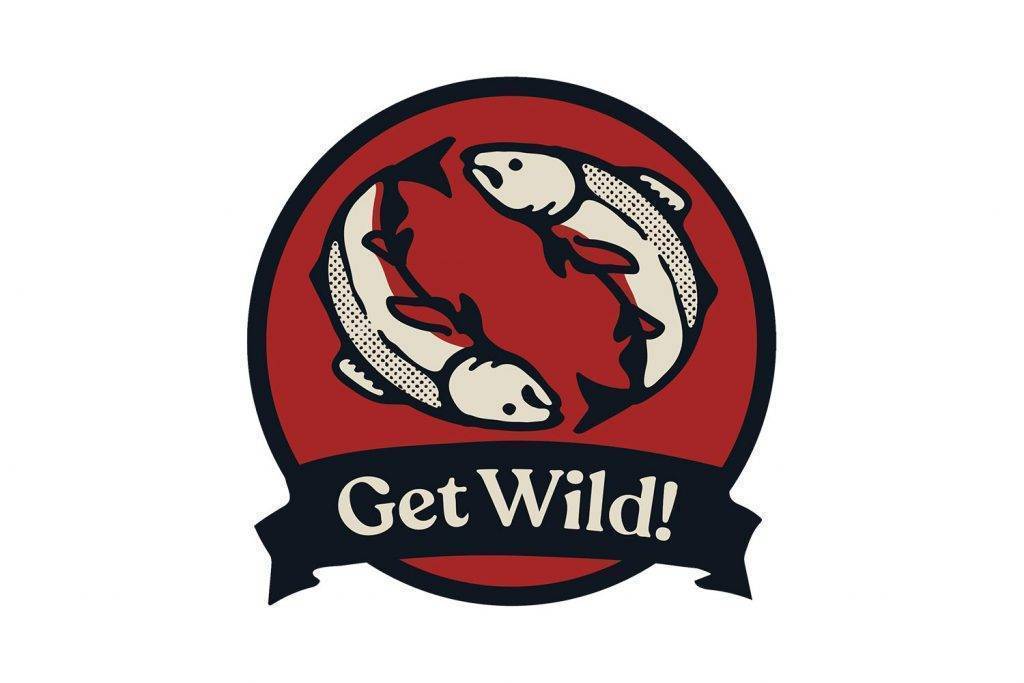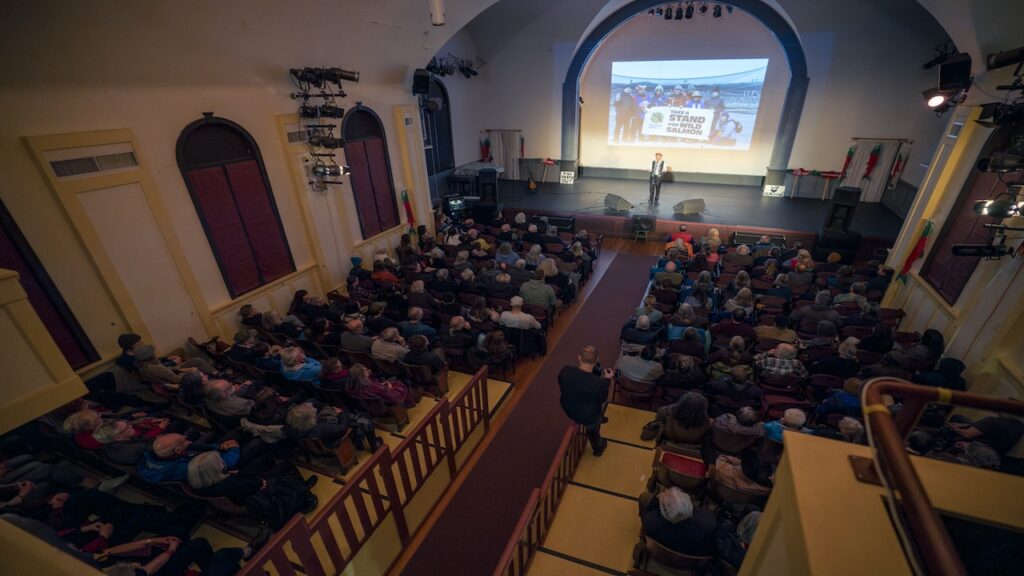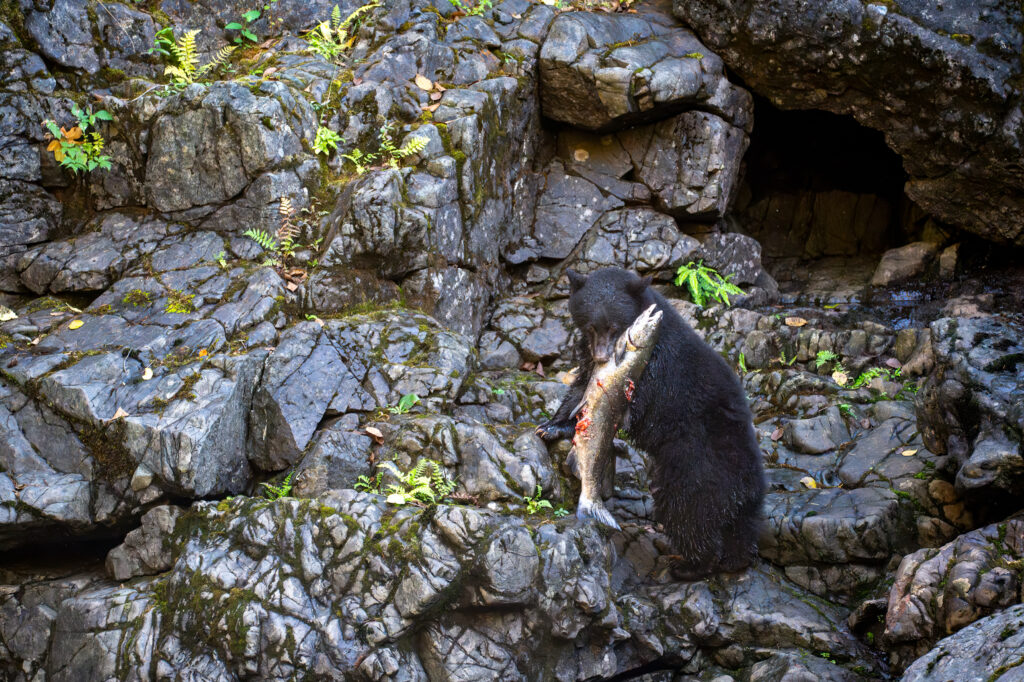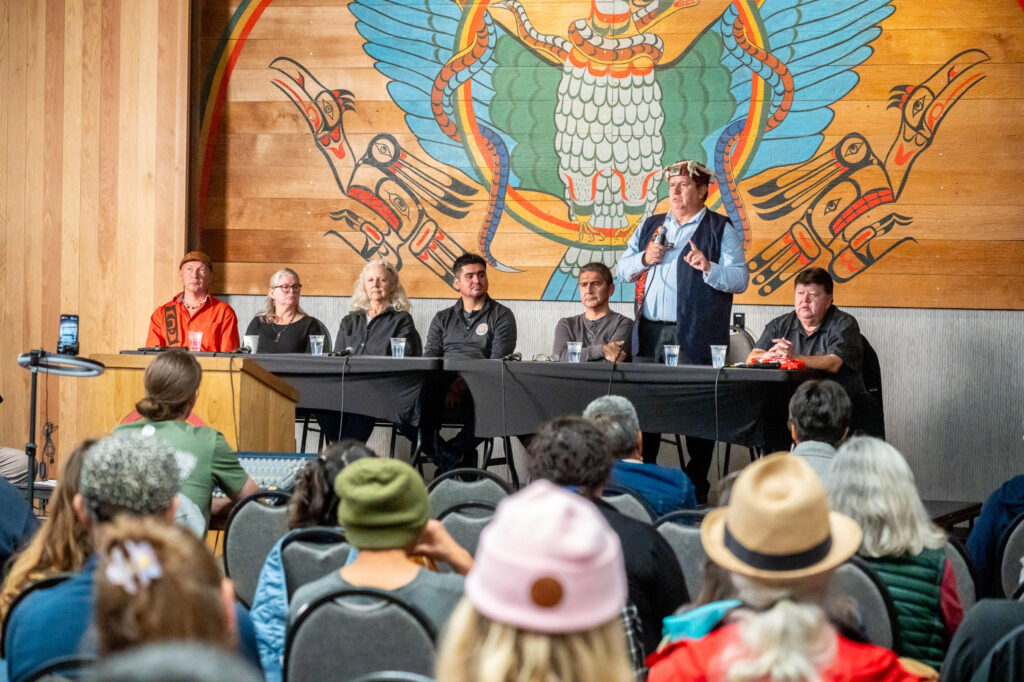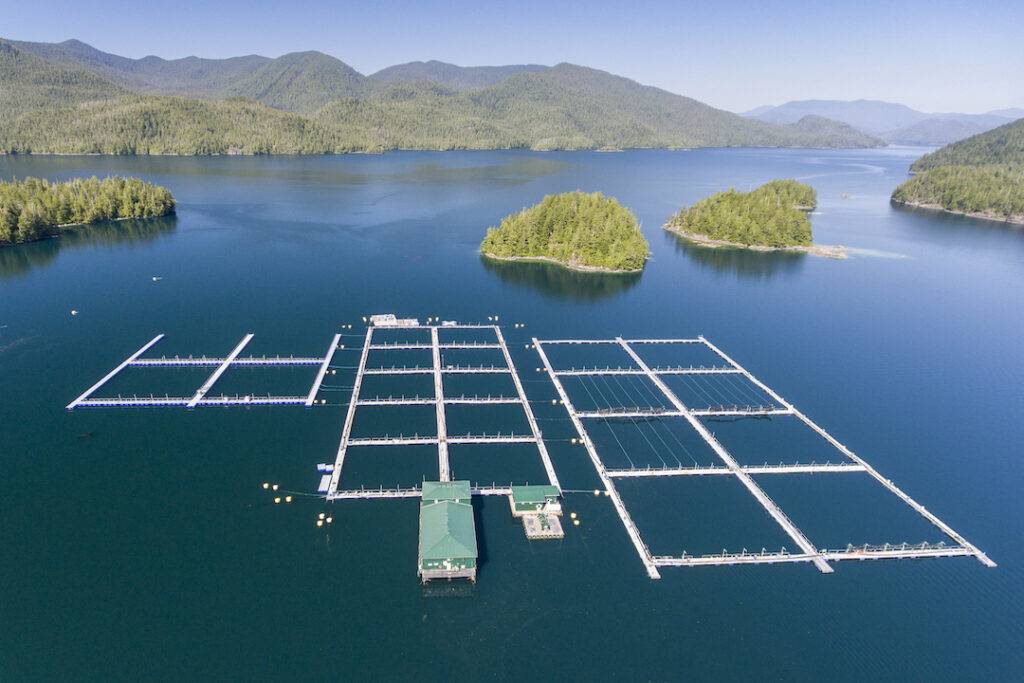Salmon lice are a tiny crustacean which occurs naturally in the waters of Clayoquot Sound. Fish farms provide an ideal breeding ground for these parasites—with each facility presenting half a million farmed salmon trapped in a confined space. Because fish farms in BC use open-net pen technology from the 1980s, lice can swim in to infest the farmed fish, and then swarm back out to plague wild salmon as they swim past (or through) the pens.
Sea lice continue to plague the salmon farming industry globally. No treatment has ever solved this problem, anywhere in the world. Clearly a new approach is needed, which is why we’re seeing a global shift to land-based salmon farming.
While the past doesn’t repeat itself, it often rhymes
Three years ago, Cermaq Canada received a permit from the BC Ministry of Environment to use 2.3 million litres of a pesticide called Interox® Paramove® 50 (active ingredient: hydrogen peroxide). This permit allows them to suck the farmed fish out of their pens into a well boat, where they are soaked in a corrosive chemical bath to dislodge the sea lice. The fish are then poured back into the pens, and the pesticide is dumped right into the pristine waters of the Clayoquot Sound UNESCO Biosphere Region.
Although their website stated they had “no immediate plans to use this treatment at any particular sites”, in 2018, Cermaq ended up using (and dumping) 65,874 kilograms of Paramove. And they are currently using this permit to treat a number of their operations (see March 14 map below).
Now Cermaq is applying for another 3-year permit, this time to use and dump just shy of a million litres.
Paramove is lethal to Grey Whale prey
New science coming out of Norway shows that peroxide treatments can be much more lethal to non-target species than was previously understood. A paper published by the Institute of Marine Research showed that peroxide is toxic to krill at concentrations of 1/2,000 of the recommended dosage. That’s right—this stuff is so toxic it will still kill crustaceans at a concentration of .05% of the recommended dosage.
Another study from Norway suggests that krill within 2 km of a salmon farm may be exposed to lethal concentration of peroxide.
Paramove can persist in the environment for weeks, and tends to pool in shallow waters—the very place used for rearing by juvenile wild salmon, as well as crabs, shrimps and other crustaceans in their larval life stages.
As I write these words, twenty thousand Grey Whales are migrating past Clayoquot Sound, and a handful will remain as summer residents. They like it here, because of the abundance of tiny prey species such as mysids and amphipods. Grey whale prey are crustaceans—just like salmon lice—so they could become collateral damage in Cermaq’s chemical warfare.

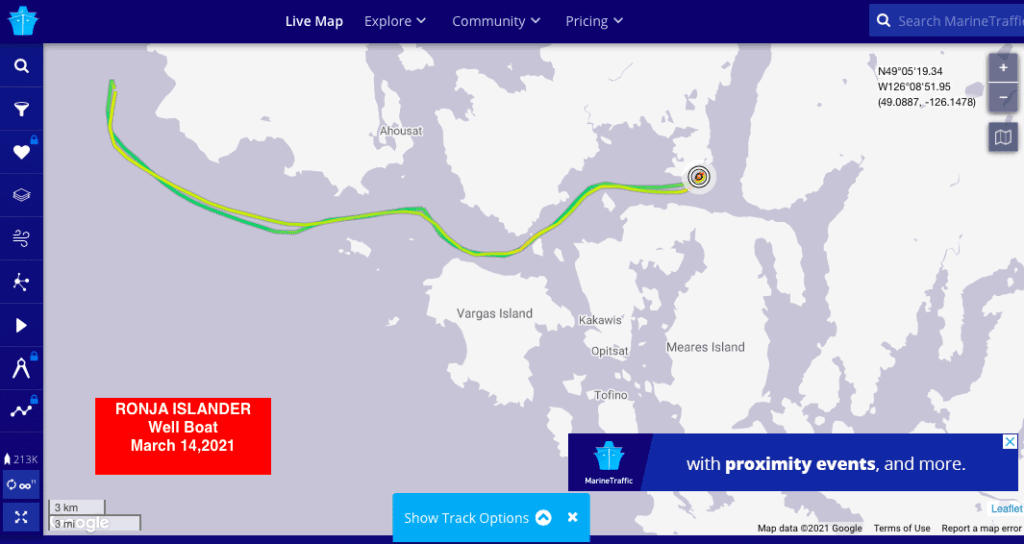
A ticking viral bomb?
Using Paramove to combat sea lice could be increasing the spread of disease from farmed to wild salmon. The treatments are stressful to farmed salmon, and weaken their immune systems. It can take up to two weeks for the fish to recover, during which period they are susceptible to disease outbreaks.
Our 2020 Going Viral report documented piscine orthoreovirus (PRV) on all but one active fish farm in Clayoquot Sound. When an Atlantic salmon is stressed, PRV can cause Heart skeletal muscle inflammation (HSMI). A diseased farm can shed up to 65 billion viral particles per hour, which are spread far and wide by ocean currents. Because fish breathe water directly through their gills, disease transfer from farmed to wild fish is dead easy. In wild Chinook salmon, PRV causes jaundice, leading to organ failure and death. And Clayoquot Sound Chinook are nearly extinct…
Lice will adapt to anything and come back stronger
Cermaq is spending millions of dollars on sea lice control. They now have two hydrolicer vessels in Clayoquot Sound, tumbling and pressure-washing their farmed fish in an attempt to dislodge the lice. They have the huge well-boat in operation, using Paramove 50 to burn the lice off. And they sometimes lace fish feed with a pesticide called SLICE, although resistance to SLICE is documented, which is what led Cermaq to seek other options three years ago.
Because of their short life cycle, any lice which survive treatments (whether chemical or mechanical) are by definition resistant to the treatment used. Lice will adapt to anything we throw at them, and come back stronger. Which is why the numbers are getting worse—right at a time when wild salmon are on the brink of extinction.
The Clayoquot Sound UNESCO Biosphere Region is meant to demonstrate a working balance between conservation and sustainable development. Clearly, chemical treatments of sea lice are not sustainable, and harm conservation values. The world’s oceans are under incredible stress, and dumping pesticides in them will not help.
Remove open-net pen salmon farms from the ocean
The only effective solution to the industry’s sea lice crisis is to remove open-net pen salmon farms from the ocean, as the federal government has promised to do by 2025. And indeed they’ve already begun—in December 2020, eighteen fish farm licenses were not renewed in the Discovery Islands.
Wild salmon numbers in Clayoquot Sound are in precipitous decline—we are witnessing extinction play out before our eyes. Last year the Tofino hatchery was unable to collect Chinook eggs to rear—for the first time ever! If we lose wild salmon, we lose everything: ancestral forests, wildlife, and cultures. Why should we sacrifice local food security, the wild salmon economy, and the iconic ecosystems of Clayoquot Sound, when the writing is on the wall?
Add your voice—it’s time to say no!
It’s time to stand up and say no. Please add your voice and tell BC Environment Minister George Heyman to deny Cermaq’s pesticide permit to use Paramove. Thank you for taking a stand for wild salmon!
Dan Lewis is Executive Director of Clayoquot Action.


